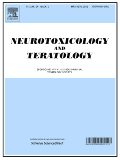
SOMATOSENSORY AND MOTOR RESEARCH
Scope & Guideline
Illuminating the Path of Sensory and Motor Exploration
Introduction
Aims and Scopes
- Somatosensory Processing and Perception:
Investigates how sensory information is processed and interpreted by the nervous system, with studies examining tactile, proprioceptive, and pain perceptions. - Motor Control and Coordination:
Focuses on the mechanisms underlying motor commands and coordination, including studies on motor learning, execution, and neuroplasticity. - Neurophysiological Mechanisms:
Explores the neural underpinnings of sensory and motor functions, utilizing techniques such as neuroimaging, electrophysiology, and behavioral assessments. - Clinical Applications and Rehabilitation:
Applies findings to clinical settings, examining interventions for various conditions affecting motor and sensory functions, including stroke, chronic pain, and neurological disorders. - Innovative Therapeutic Techniques:
Researches new therapeutic modalities, including kinesiology taping, electrical stimulation, and virtual reality, assessing their efficacy in enhancing motor and sensory outcomes.
Trending and Emerging
- Interdisciplinary Approaches to Pain Management:
There is a rising trend in studies that incorporate psychological, physiological, and social factors in understanding and managing pain, reflecting a more holistic view of pain management. - Neuroplasticity and Rehabilitation:
Increasing focus on how neuroplastic changes can be harnessed for rehabilitation purposes, particularly in populations recovering from neurological injuries or conditions. - Technological Innovations in Sensory Feedback:
Emerging studies are investigating the application of advanced technologies, such as virtual reality and wearable sensors, to enhance sensory feedback and motor performance. - Motor Learning and Action Observation:
Growing interest in the mechanisms of motor learning, particularly through observational learning and its applications in rehabilitation settings. - Impact of Lifestyle Factors on Motor and Sensory Functions:
Research is increasingly examining how lifestyle factors, such as physical activity, nutrition, and mental health, influence sensory processing and motor control.
Declining or Waning
- Traditional Rehabilitation Techniques:
Interest in conventional rehabilitation methods appears to be waning, with a notable shift towards more innovative and technology-driven approaches, such as virtual reality and gamification. - Basic Mechanistic Studies on Pain:
Research focusing solely on the basic mechanisms of pain perception without clinical implications has decreased, possibly due to a growing emphasis on translational research. - Isolated Sensory Studies:
There is a declining trend in studies that examine sensory modalities in isolation, with a shift towards more integrative approaches that consider the interaction between sensory and motor systems.
Similar Journals

Wiley Interdisciplinary Reviews-Cognitive Science
Bridging disciplines for deeper cognitive understanding.Wiley Interdisciplinary Reviews-Cognitive Science (ISSN: 1939-5078, E-ISSN: 1939-5086), published by WILEY, stands as a premier academic journal dedicated to advancing the understanding of cognitive science through an interdisciplinary approach. Since its inception in 2010, the journal has rapidly established itself as a leading source of knowledge, achieving a Q1 ranking in the 2023 category of Medicine, Neuroscience, and Psychology, underscoring its significant impact within these fields. With a Scopus ranking of #27 in General Psychology and #30 in General Neuroscience, it offers researchers, professionals, and students access to cutting-edge research that bridges various disciplines, fostering collaboration and innovation. Though not openly accessible, this journal is critical for those aiming to stay at the forefront of cognitive science research, providing comprehensive reviews that synthesize emerging findings and highlight future directions for study.

CEREBELLUM
Bridging Basic Science and Clinical Applications.CEREBELLUM is a prestigious academic journal published by Springer, dedicated to advancing the understanding of cerebellar function and its implications in both health and disease. With an ISSN of 1473-4222 and an E-ISSN of 1473-4230, this journal has established itself as a leading resource in the fields of Medicine and Neurology, achieving a remarkable Q1 ranking in both categories as of 2023. Researchers and practitioners engaged in clinical and experimental neuroscience will find a treasure trove of well-curated, high-impact studies that span from basic science to clinical applications, reflecting the journal's commitment to fostering innovation and collaboration. CEREBELLUM not only embraces rigorous peer review processes but also promotes rich interdisciplinary dialogues that are essential for the evolution of neurological sciences. As a vital publication from an esteemed publisher located in the United States, it caters to an audience that includes scholars, medical professionals, and students eager to delve into cutting-edge cerebellar research and its broader implications.

MOTOR CONTROL
Fostering Innovation in Neurology and TherapyMOTOR CONTROL, published by HUMAN KINETICS PUBL INC, is a prominent journal focusing on the interdisciplinary study of motor performance and control mechanisms. Since its inception in 1997, the journal has served as a critical platform for researchers, professionals, and students engaged in fields related to neurology, physical therapy, sports therapy, and medical physiology. With an ISSN of 1087-1640 and a commitment to fostering academic discourse, MOTOR CONTROL is indexed across various categories, achieving a commendable Q3 ranking in several areas like Neurology (clinical) and Physical Therapy in 2023, and maintaining a publication horizon extending to 2024. Although it does not offer Open Access, the journal remains a valuable resource for advancing knowledge in motor function evaluation and intervention strategies. The insights published within its pages contribute significantly to enhancing clinical practices and understanding the dynamics of motor activities, making it an essential read for those dedicated to improving human movement science.

Frontiers in Human Neuroscience
Bridging Neuroscience with Behavioral InsightsFrontiers in Human Neuroscience is a premier open access journal published by FRONTIERS MEDIA SA, dedicated to advancing the understanding of the complexities of human neuroscience. With an ISSN of 1662-5161, the journal has established its prominence in various fields, achieving a Q2 ranking in categories such as Behavioral Neuroscience, Neuropsychology and Physiological Psychology, and Psychiatry and Mental Health as of 2023. Since its inception in 2008, Frontiers in Human Neuroscience has consistently contributed to the scholarly dialogue by offering a platform for innovative research that bridges the gap between neuroscience and behavioral science. The journal's rigorous peer-review process and commitment to open access ensures that findings are readily available, promoting collaboration and progress within the academic community. With an impact on neuroscience disciplines, it stands at the forefront of the field, inviting researchers, professionals, and students alike to engage with cutting-edge studies and developments. The journal's address is located in Lausanne, Switzerland, where it continues to flourish as a hub for neurobiological exploration.

Neuron
Exploring the frontiers of neuroscience research.Neuron is a premier journal in the field of neuroscience, published by CELL PRESS in the United States. Since its inception in 1988, this esteemed publication has been at the forefront of neuroscientific research and continues to shape our understanding of the brain and nervous system. With an impressive 2023 Scopus rank of #5 out of 113 in General Neuroscience and a notable Q1 quartile classification, Neuron is recognized for its high-quality, impactful contributions to both established and emerging areas of neuroscience. The journal does not operate under an open access model, yet it offers unparalleled insights and rigorous peer-reviewed research that are essential for researchers, professionals, and students alike. By publishing cutting-edge findings and fostering critical discussions, Neuron plays a vital role in advancing our collective knowledge in this constantly evolving field, making it an indispensable resource for anyone aiming to stay ahead in neuroscience research.

NEUROTOXICOLOGY AND TERATOLOGY
Cultivating a deeper comprehension of toxic effects on the nervous system.NEUROTOXICOLOGY AND TERATOLOGY, published by PERGAMON-ELSEVIER SCIENCE LTD, is a premier journal dedicated to advancing knowledge in the critical fields of neuroscience and toxicology. With a focus on the mechanisms of neurotoxic effects and developmental disturbances, this journal serves as a vital resource for researchers, practitioners, and students committed to understanding the complexities of neurotoxicology and its implications for human health. The journal boasts a solid impact factor and holds esteemed quartile rankings, being classified as Q3 in both Cellular and Molecular Neuroscience and Developmental Neuroscience, and Q2 in Toxicology as of 2023. Despite being a subscription-based journal, NEUROTOXICOLOGY AND TERATOLOGY is recognized for its authoritative peer-reviewed articles that encompass a broad spectrum of research from 1987 to 2024, making it indispensable for those who seek in-depth knowledge and current scientific discourse in the field. Its impactful position within Scopus rankings underlines its importance, with notable placement across various neuroscience and toxicology categories.

ACTA NEUROLOGICA BELGICA
Empowering Knowledge, Transforming Neurology.ACTA NEUROLOGICA BELGICA is a leading academic journal published by Springer Heidelberg, dedicated to advancing the field of neurology and medicine. With an ISSN of 0300-9009 and E-ISSN 2240-2993, this journal has been a vital resource since its inception, contributing significantly to neurological research and clinical practice. It holds a respectable impact factor with categories spanning from Q2 in Medicine (miscellaneous) to Q3 in Neurology (clinical) as of 2023, indicating its prominence in the scientific community. The journal's extensive coverage since 1959 enhances its historical relevance, while its ongoing publication until 2024 ensures the latest developments are readily accessible. Researchers and practitioners can benefit from its rigorous peer-reviewed articles, which are crucial for staying current in this rapidly evolving discipline. As a scholarly platform, ACTA NEUROLOGICA BELGICA plays a pivotal role in disseminating knowledge and fostering innovation in neurology, making it a must-read for professionals, students, and anyone involved in the field.

NEUROREHABILITATION
Advancing rehabilitation through innovative neurological research.Welcome to NEUROREHABILITATION, a premier journal dedicated to advancing the field of rehabilitation, specializing in neurology and physical therapy. Published by IOS PRESS, the journal has established itself as a crucial platform for disseminating high-quality, peer-reviewed research since its inception in 1991. Located in the Netherlands, NEUROREHABILITATION has achieved significant recognition within the academic community, reflected in its impressive impact factor and Scopus rankings, including a Q2 categorization in Rehabilitation and Physical Therapy, highlighting its relevance and influence in these essential domains. With a commitment to enhancing clinical practices and outcomes for individuals with neurological conditions, this journal serves as an invaluable resource for researchers, clinicians, and students alike. Although it currently operates under a subscription model, NEUROREHABILITATION continues to contribute meaningfully to the ongoing dialogue in rehabilitation sciences, making it a key player in shaping the future of therapy and patient care.

REHABILITATION
Catalyzing Progress in Rehabilitation Science and TherapyREHABILITATION is a leading peer-reviewed journal published by GEORG THIEME VERLAG KG, dedicated to advancing the field of rehabilitation. With a rich history dating back to 1972 and converging into 2024, this journal plays a pivotal role in disseminating high-quality research that addresses critical challenges in rehabilitation science and practice. Although it is currently categorized in the third quartile (Q3) of the Rehabilitation category for 2023, its contribution is essential for professionals and researchers striving to improve therapeutic strategies and patient outcomes. The journal strives to publish original research, comprehensive reviews, and insightful commentaries that challenge current paradigms and inspire further inquiry in the field. To remain competitive and relevant, REHABILITATION continually seeks to elevate its global impact, making it a valuable resource for academics and practitioners alike, despite its current Scopus rank of #110 out of 161 in the Medicine _ Rehabilitation category. Located in Stuttgart, Germany, it serves as a crucial platform where innovative ideas and methodologies are shared amongst the international rehabilitation community.

BRAIN BEHAVIOR AND EVOLUTION
Illuminating the Pathways of Neurobiological ChangeBRAIN BEHAVIOR AND EVOLUTION, with ISSN 0006-8977 and E-ISSN 1421-9743, is a prominent journal dedicated to the intricate connections between brain function, behavior, and evolutionary processes. Published by KARGER in Switzerland, this journal has established itself as a crucial resource in the fields of Behavioral Neuroscience and Developmental Neuroscience, evidenced by its respectable 2023 category quartiles of Q2 and Q3, respectively. With a rich publication history spanning from 1968 to 2024, BRAIN BEHAVIOR AND EVOLUTION presents original research articles, reviews, and theoretical contributions that investigate the biological underpinnings of behavior, making it an essential platform for researchers, professionals, and students committed to advancing our understanding of neurobiological and evolutionary mechanisms. Although it is not an open-access journal, its rigorous peer-review process ensures that only high-quality research is disseminated, maintaining the journal's impact in the academic community.